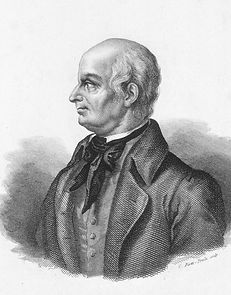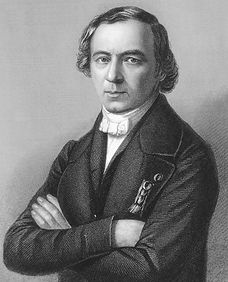
Newport's British Rivals
William Carpenter
1813–1885
Richard Owen
1804–1892
Carpenter was Newport's friend and also a rival when it came to their similar ideas about the conversion of inorganic forces into vital forces. In June 1850, Carpenter presented a philosophical essay, "On the Mutual Relations of the Vital and Physical Forces," at the same Royal Society meeting where Newport read his first amphibian fertilization paper that would later win him the Royal medal. In "Mutual Relations," Carpenter proposed the concept of "cell force" where the cell fabric converts ambient forces like heat, light, and electricity into a general vital force in the body. The following August, Newport wrote a similarly titled paper "On the Reciprocal Relation of the Vital and Physical Forces" proposing a similar idea and claimed that he had it first. Newport later drew on the idea of "cell force" for his concept of "sperm-force." In my paper I discuss their subdued priority dispute. Carpenter in my estimation had the most influence on Newport's ideas about the intimate connection between inorganic and organic forces and my paper reviews German philosophical influences on Carpenter's own ideas in the 1830s and 40s. Their relationship shows the mutual influence and competition between vitalists in the early Victorian period.
Newport and Owen were colleagues and served on committees together. Owen wrote a letter recommending Newport receive a Civil List pension. In a famous lecture in March 1849, Owen proposed his concept of "spermatic force" to explain the alternating cycles of sexual and asexual reproduction in organisms like the aphid. During that time Newport was busy with his sperm filtration experiments. Newport subsequently developed his idea of "sperm-force" without ever mentioning Owen's similar-sounding idea. I speculate in my paper about the reason for Newport's silence.
Click on the image or here to go to a page on Nelson.
Martin Barry
1802–1855
Illustration 167 Barry's depiction of an ovarian ovum; its orifice contains a spermatozoon inside. Illustration 168 is a close-up of the sperm inside the orifice. From Martin Barry. “Researches in Embryology. Third Series: A Contribution to the Physiology of Cells.” Philosophical Transactions of the Royal Society of London 130 (1840): 529–93. http://www.jstor.org/stable/108232.
Stephen Jacyn'a's paper on Barry ("Moral Fibre: The Negotiation of Microscopic Facts in Victorian Britain") provides a fascinating insight into Barry's creative thinking and his relentless pursuit of recognition that ran him afoul of imminent physiologists like William Sharpey. The establishment's rejection of Barry as a bold hypothesizer provides a context to interpret Newport's failure to publish his account of sperm-force. As a competitor in the fertilization game, Newport could not verify Barry's claim that sperm entered the rabbit egg by way of a fissure or orifice. Barry continued to argue for priority in discovering spermatic penetration of the animal egg. In 1853 Newport reviewed his reiterated claim but rejected it for publication in the Royal Society Philosophical Transactions.
Richard Fowler had experimented with animal electricity in the late 18th century. By the 1840s and 50s he was an elderly physician and still writing when Newport argued for the conversion of inorganic forces into organic forces. In 1850, Newport was anxious to stake his claim for the idea when he noted Fowler's 1849 essay, "If Vitality be a Force having Correlations with the Forces, Chemical Affinities, Motion, Heat, Light, Electricity, Magnetism, Gravity, so ably shown by Professor Grove to be modifications of one and the same Force?"
Newport's Predecessors
and
Reversing the conclusions of Spallanzani, Prévost and Dumas conducted filtration experiments in the 1820s that showed sperm are the active agents in fertilization. Newport's filtration experiments in 1849 and 1850 confirmed their conclusions. Prévost and Dumas also soaked eggs in blood and ink and concluded that sperm could similarly enter the egg interior. In this case, Newport refuted their conclusions when he soaked frog eggs in carmine dye. Newport's mixed rulings on Prévost and Dumas' conclusions shows the varying interpretations 19th-century researchers had about spermatic agency: Newport heavily promoted sperm's role in fertilization but until 1852 denied that it bodily penetrated the egg. Prévost and Dumas themselves differed in the exact contribution of sperm to the body of the embryo. Dumas believed the sperm contribute components of the nervous system while Prévost favoured an epigenetic development. For histories on the embryological research of Prévost and Dumas see works by Elizabeth Gasking and Carlo Castellani. Also PandD's 1824 paper in Annales des Sciences Naturelles pp. 100–121; 129–149.

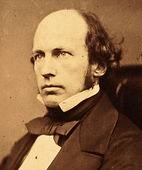_cr%20levels.jpg)
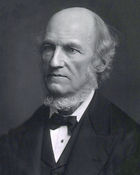
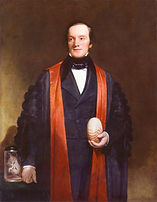








__Natuurkundige_te_Delft_Rijksmuseum_SK-A-957%20annotate.jpeg)
